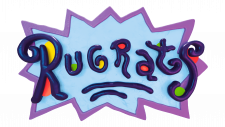Cinar Logo
Cinar, a Canadian media firm, was renowned for its contributions to children’s television. Founded in 1976 in Montreal by Micheline Charest and Ronald Weinberg, it gained fame for producing animated shows like “Arthur” and “Caillou”. Notably, Cinar was involved in a significant scandal in the late 1990s involving financial irregularities and unauthorized American investments, leading to legal troubles and its eventual acquisition by Cookie Jar Entertainment in 2004. This transition marked the end of Cinar’s independent operations, but its legacy in children’s entertainment endures.
Meaning and history
Founded in Montreal in 1976 by Micheline Charest and Ronald Weinberg, Cinar was a trailblazing Canadian company specializing in children’s television. It distinguished itself early on with a focus on combining entertainment and education, a novel concept at the time. Cinar’s rise to fame in the 1980s was marked by international acclaim, particularly for its show “The Adventures of Paddington Bear”, which showcased its global appeal.
The 1990s were a golden era for Cinar, with the creation of beloved series like “Arthur” and “Caillou”. These shows, celebrated for their compelling narratives and moral lessons, cemented Cinar’s status in the children’s entertainment landscape. However, this success was marred by controversy in the late 1990s when Cinar became entangled in a significant scandal. Investigations uncovered financial misconduct, including misused funds and illegal investments in American productions to inappropriately benefit from Canadian tax incentives.
This scandal had profound implications, leading to legal consequences and a tarnished reputation for Cinar. It also highlighted the importance of ethical practices in corporate governance. The tumultuous period culminated in 2004, when Cookie Jar Entertainment acquired Cinar. Although this acquisition marked the end of Cinar as an autonomous company, its pioneering spirit in children’s programming lives on. The shows produced by Cinar, particularly “Arthur”, continue to be celebrated, embodying the company’s initial vision of blending education with entertainment in children’s media. The Cinar story, with its mix of innovation and controversy, offers valuable lessons about the complexities of the entertainment industry.
What is Cinar?
Cinar was a Canadian media company, renowned in the 1980s and 1990s for producing innovative children’s television content. Based in Montreal, it achieved acclaim for series like “Arthur” and “Caillou”, blending entertainment with educational themes. However, its legacy is also marked by a high-profile financial scandal in the late 1990s, leading to its eventual acquisition and rebranding.
1984 – 1997
This logo presents a bold typographic design, with the name “CINAR” depicted in uppercase letters. The characters are stylized with horizontal lines, giving the impression of speed or motion. Blue dominates the palette, symbolizing stability and trust, with a solitary square of red breaking the monotony, suggesting energy and passion. The font is modern and sans-serif, indicative of a forward-thinking and accessible brand. Its simplicity hints at a company confident in its identity, with the horizontal lines perhaps also alluding to layers or variety in its offerings. Overall, the logo conveys a sense of dynamism and professionalism.
1992 – 2004
In this iteration of the logo, the letters appear slimmer, suggesting a refinement in the brand’s visual representation. The narrowing of the typography might imply a sharpened focus or a modernization of the company’s image. Despite the reduction in width, the essence of motion and energy conveyed by the horizontal stripes remains. This subtle change could be indicative of a strategic brand evolution, maintaining the core identity while streamlining the appearance for a contemporary audience. The slimming of the letters does not compromise the logo’s impact; instead, it adds a touch of sophistication.












